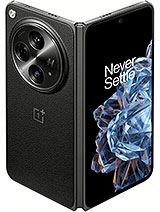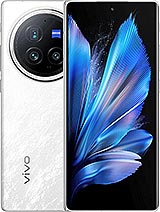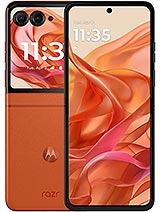Samsung refreshed its two foldable lines this week with new Z Fold and new Z Flip models. They’re currently up for pre-order and will go on sale July 24 (or later in some markets). Check out our practical assessment for a closer look at both models. Considering buying one?
Let’s take a look at the Samsung Galaxy Z Fold6 First. Samsung has tweaked the aspect ratios of both the cover display (now 6.3”, 22.1:9) and the main display (now a 7.6” panel with a 10.5:9 aspect ratio). It’s a subtle change, but it makes for a noticeable improvement in usability.
A couple of other big changes: the phone is 14 grams lighter and 1.3mm thinner than the Z Fold5 when folded, both of which improve its feel in the hand. The phone now has an IP48 rating, which isn’t good enough to keep out dust, but it will block larger particles.
The Samsung Galaxy Z Flip6 is also thinner when folded, but the difference is less dramatic – at 14.9mm, it’s 0.2mm thinner than the Z Flip5. The other dimensions and weight are the same. This model is also IP48-rated, and Samsung says it uses refined Gorilla Glass Victus 2 and Armor Aluminum materials to make the new foldable phone stronger.
The big change on the Flip this year is the 50MP main camera. The Z Fold has a telephoto lens, but all Z Flips so far have struggled with zoom. The new sensor should be more capable than the old 12MP unit in all scenarios.
Finally, both phones use the Galaxy-exclusive Snapdragon 8 Gen 3 chipset. This year, the Galaxy Z Flip6 also gets a vapor chamber for cooling (a first for the series). And it’s been upgraded to 12GB of RAM.
Below are the global pricing for the Galaxy Z Fold6 and Z Flip6. Keep in mind that this doesn’t include Samsung’s pre-order incentives (free storage upgrade, enhanced trade-in, and more).
| Galaxy Z Fold6 | |||
|---|---|---|---|
| 256GB | 512GB | 1TB | |
| US | $1,900 | $2,020 | $2,260 |
| Canada | $2,565 | $2,725 | $3,045 |
| Europe | €2,000 | €2,120 | €2,360 |
| United Kingdom | €1,800 | € 1,900 | €2,100 |
| Australia | $2,750 | $2,950 | $3,300 |
| USA | ₹165,000 | ₹177,000 | ₹201,000 |
| Galaxy Z Flip6 | |||
| 256GB | 512GB | 1TB | |
| US | $1,100 | $1,220 | – |
| Canada | $1,463 | $1,623 | – |
| Europe | €1,200 | €1,320 | – |
| United Kingdom | €1,050 | €1,150 | – |
| Australia | $1,800 | $2,000 | – |
| USA | ₹110,000 | ₹122,000 | – |
If you’re considering alternatives, there isn’t much competition for horizontally folding phones if you live in North America. The OnePlus Open is a bit old, as is the Google Pixel Fold. Both are due for replacement later this year, but even now they have advantages like a 64MP 3x telephoto camera on the Open and a 10.8MP 5x camera on the Fold, compared to a 10MP 3x module on the Z Fold6. The OnePlus Open also has a 48MP ultra-wide lens (vs. 12MP) and fast 67W charging (vs. 25W wired/15W wireless on the Samsung).
And that’s without even mentioning the fact that the Open folds to 11.7mm and weighs 239g (versus 12.1mm and 239g for the Galaxy). Neither have particle protection, only water resistance, but the Samsungs are the first foldable phones to venture that side of the IP code.

![]()

OnePlus Open • Google Pixel Fold • vivo X Fold3 Pro
The vivo X Fold3 Pro isn’t available everywhere, but it is in some regions. It folds to 11.2mm and weighs 236g, plus has a 64MP 3x telephoto and 50MP ultra-wide camera. Plus a 5,700mAh battery with 100W wired and 50W wireless charging. No particulate resistance, just IPX8. At least it uses a current chipset, the regular Snapdragon 8 Gen 3, while the OnePlus Open and Google Pixel Fold are a generation or two behind.
Okay, time to vote – are you going for the Samsung Galaxy Z Fold6? And will you be upgrading from an old foldable or will this be your first? And don’t go anywhere, we still have to do the Z Flip6 poll.
The competition between flip foldables is fierce. Motorola has already launched its Razr 50 Ultra and Razr 50 (also known as razr+ 2024 and razr 2024 in the US). Even the vanilla model has a bigger, faster, and sharper cover display than the Z Flip6 (3.6” 413ppi, 90Hz vs. 3.4” 306ppi, 60Hz), with the Ultra/+ model even better (4” 417ppi, 165Hz). Both also have faster charging (45W/15W on the Ultra, 30W/15W on the vanilla).
The camera situation is a bit odd. Motorola equipped the Razr 50 Ultra with a 50MP main camera, but has also given it a 50MP 2x portrait camera instead of an ultra-wide snapper. The Razr 50 has a 13MP ultra-wide camera in addition to the 50MP main camera. Both of these phones use weaker chipsets – Snapdragon 8s Gen 3 on the Ultra and Dimensity 7300X on the vanilla Razr.




Motorola Razr 50 Ultra • Motorola Razr 50 • Honor Magic V Flip • ZTE nubia Flip
It’s not yet clear if the Honor Magic V Flip will see a global release. This is a more affordable model with a Snapdragon 8+ Gen 1 chip, but even that has a 4-inch 405ppi 120Hz cover display and 66W charging.
The nubia Flip is already available in the US and Europe for $500 and €600 respectively. It can’t challenge the Z Flip6 in terms of specs with a Snapdragon 7 Gen 1 chip, but the rumors of the Galaxy Z Flip never materialized, so Samsung still doesn’t have a budget foldable phone.
So, what’s it going to be? Will you be hitting ‘buy’ for the Galaxy Z Flip6 or do you have other plans?








